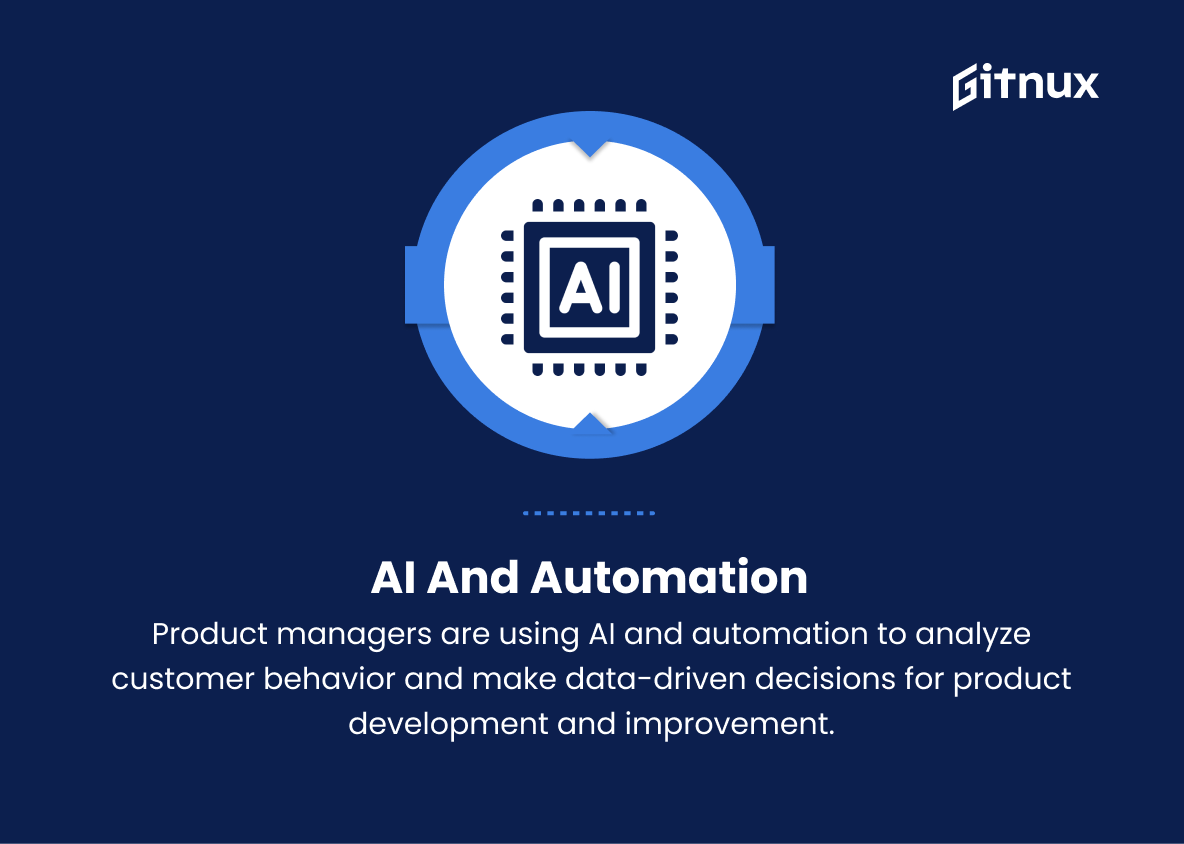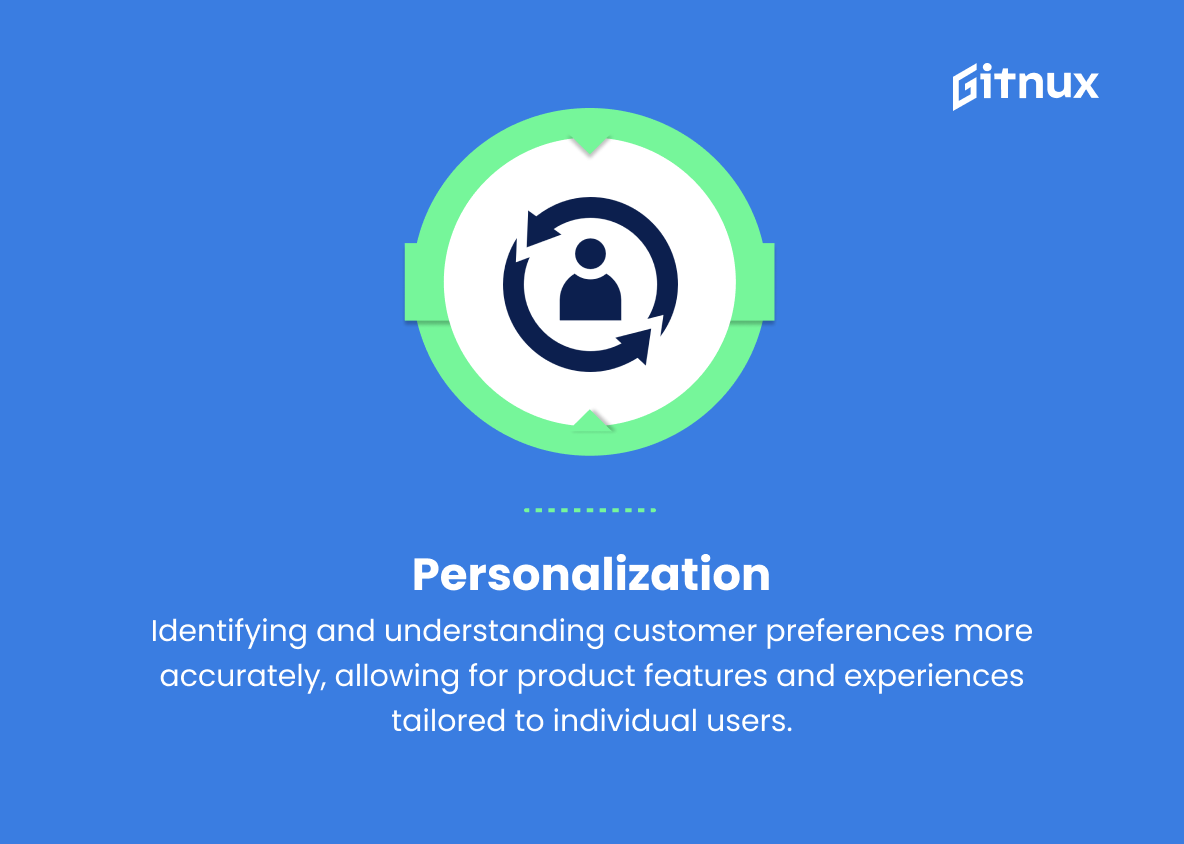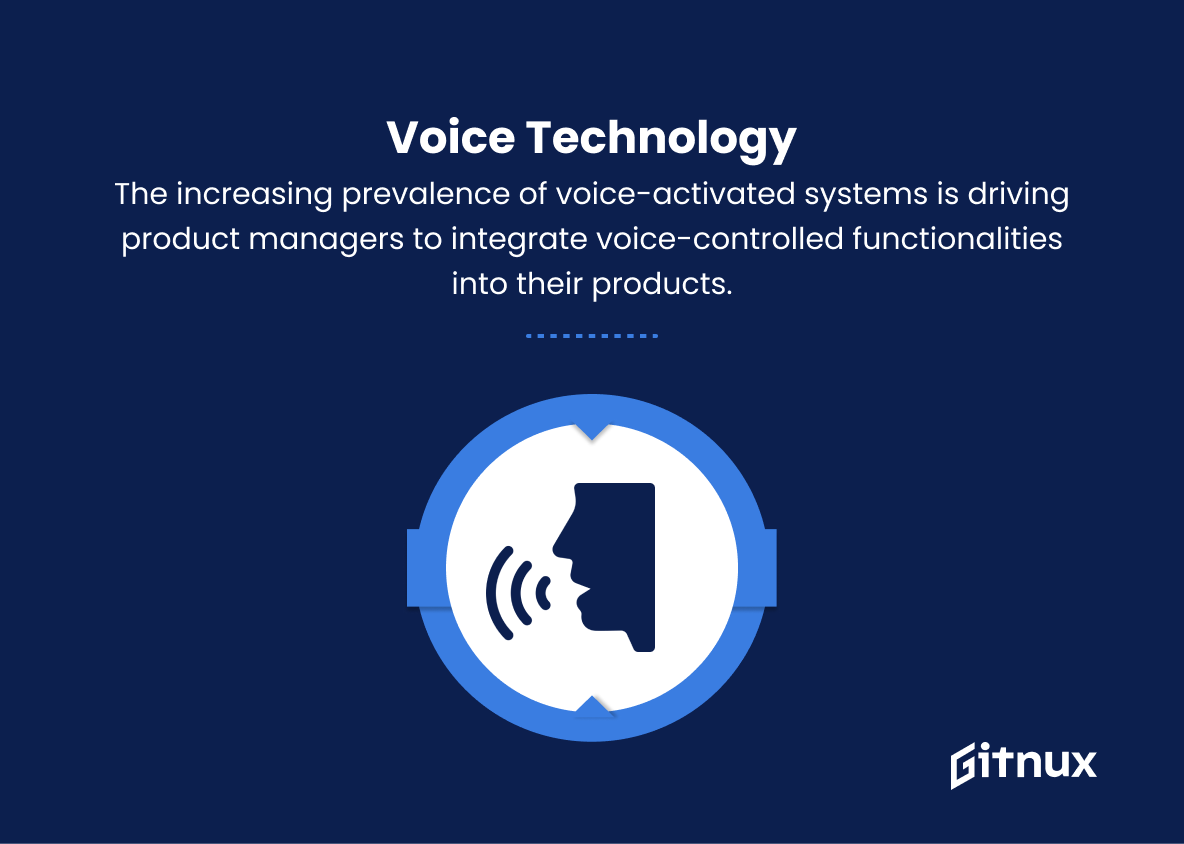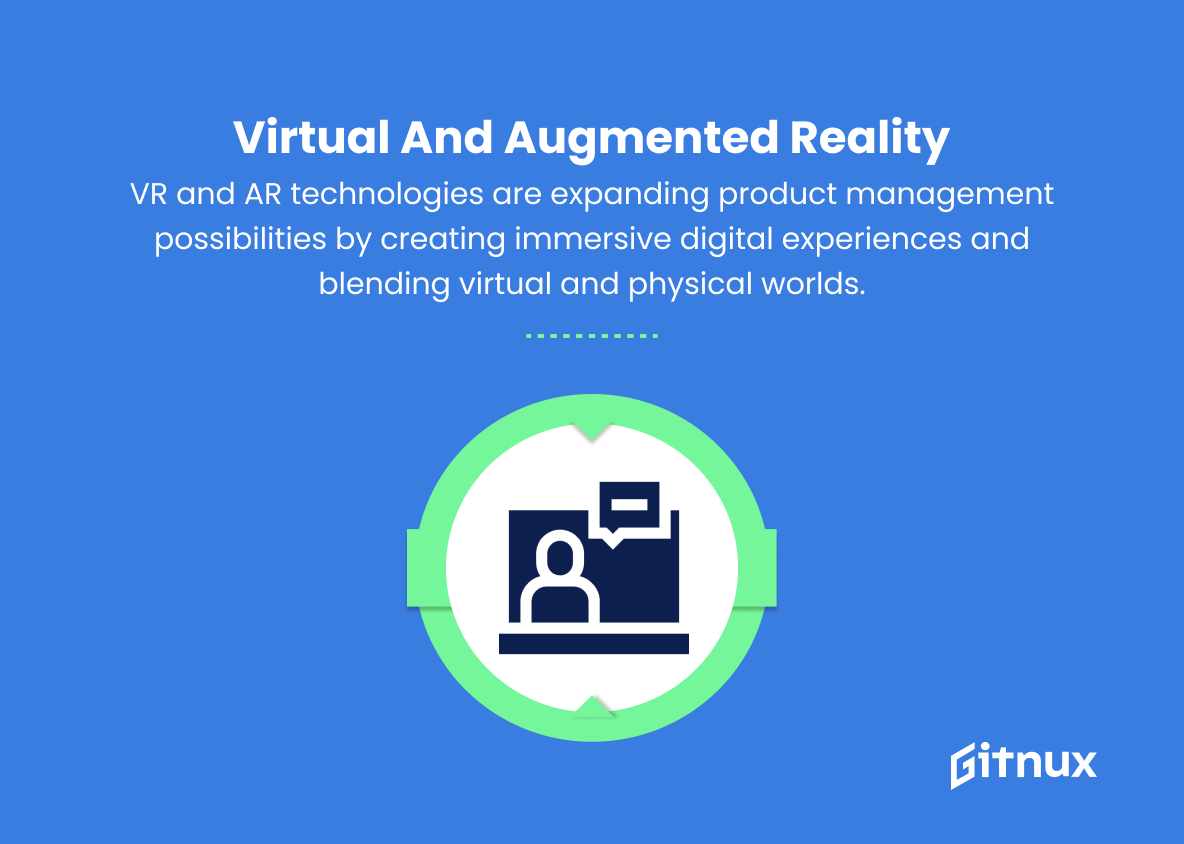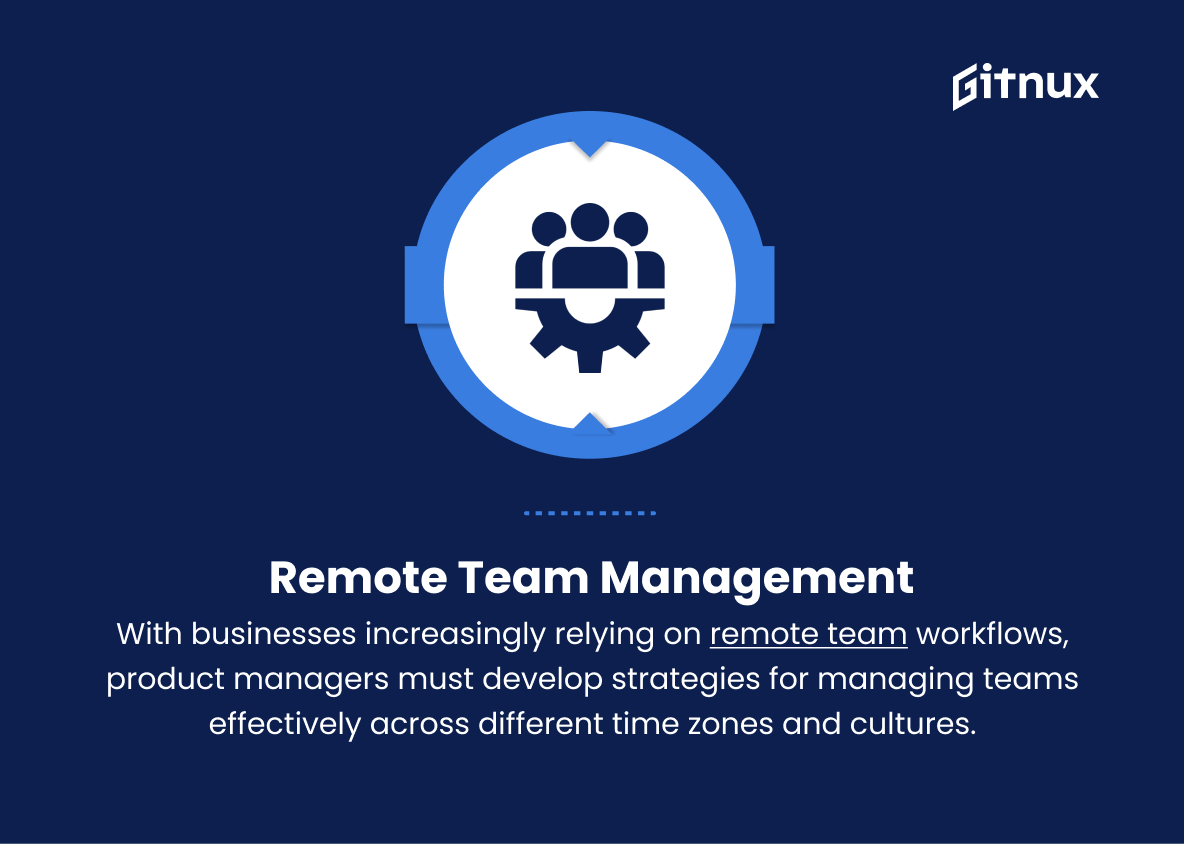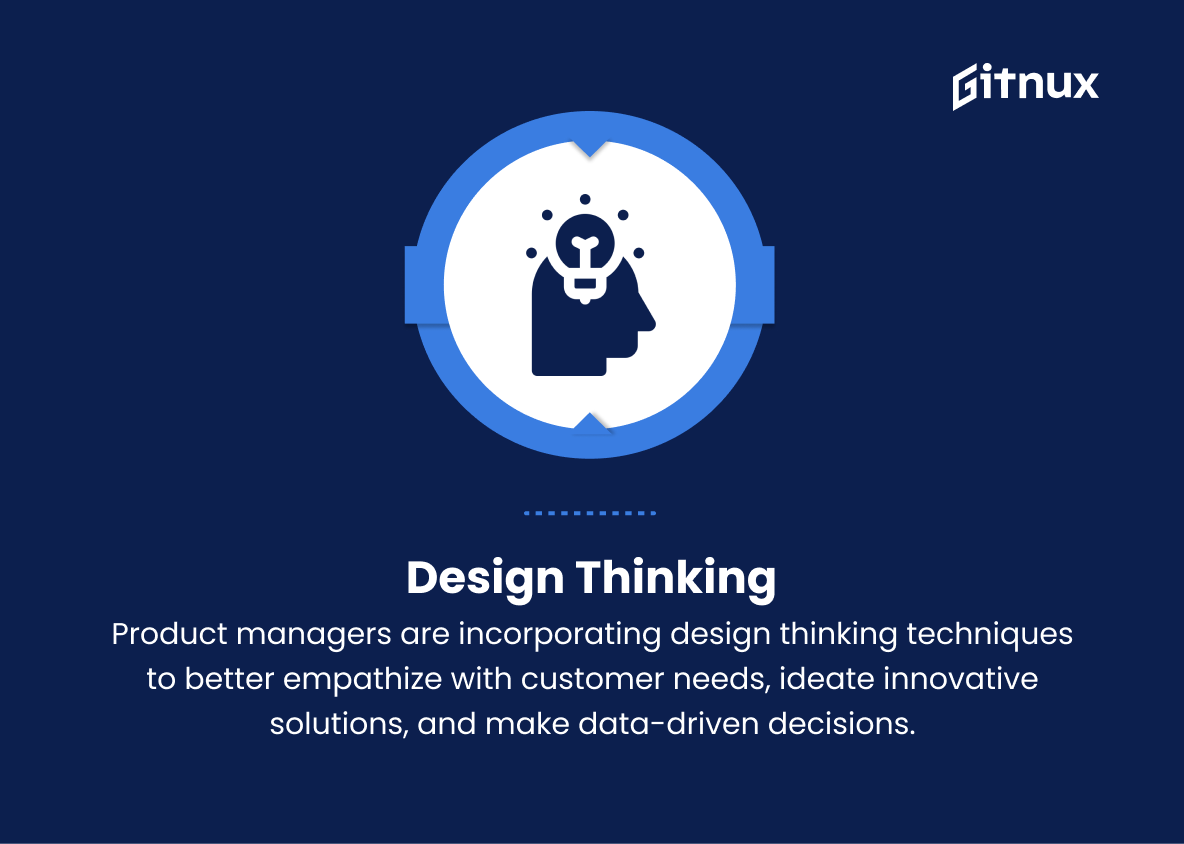In the ever-evolving world of technology and business, product management stands at the forefront, driving innovation, growth, and long-term success. As the bridge between customers, businesses, and technology teams, product managers have their fingers on the pulse of both the market and user needs, continually striving to improve product offerings and deliver exceptional experiences. In this blog post, we will delve into the latest product management trends, exploring the most impactful practices, strategies, and tools that are shaping the industry today. From the rise of artificial intelligence and data-driven decision-making to the increasing importance of user experience and collaboration, join us as we take a deep dive into the factors determining the future landscape of product management.
Top Product Management Trends
1. Artificial intelligence (AI) and automation
Product managers are increasingly leveraging AI and automation to better understand customer behavior, analyze data, and make data-driven decisions for product development and enhancements.
2. Integration of Agile and Lean methodologies
Companies are focusing on iterative product development to ensure faster delivery, improved collaboration, and quick response to customer feedback.
3. Personalization
Identifying and understanding customer preferences more accurately, allowing for product features and experiences tailored to individual users.
4. Voice technology
The increasing prevalence of voice-activated systems is driving product managers to integrate voice-controlled functionalities into their products.
5. Internet of Things (IoT)
The IoT is adding connectivity to everyday objects, presenting new opportunities for product managers to create innovative and integrated products.
6. Virtual and augmented reality
VR and AR technologies are expanding product management possibilities by creating immersive digital experiences and blending virtual and physical worlds.
7. Remote team management
With businesses increasingly relying on remote team workflows, product managers must develop strategies for managing teams effectively across different time zones and cultures.
8. Cross-functional collaboration
Product managers need to work closely with different teams from marketing, design, engineering, and customer support to ensure a seamless product lifecycle.
9. Ethical design and data privacy
The increasing awareness of privacy and security issues necessitates that product managers prioritize ethical design while handling user data.
10. Subscription and freemium models
These pricing strategies are gaining in popularity, and product managers must adapt to optimize revenue while ensuring customer satisfaction.
11. Continuous delivery and deployment
Product teams are adopting continuous delivery practices to ensure a streamlined release process and quicker product updates.
12. User Experience (UX) focus
UX is becoming increasingly important, with companies investing heavily in optimizing the user experience to ensure higher customer satisfaction and retention rates.
13. Design Thinking
Product managers are incorporating design thinking techniques to better empathize with customer needs, ideate innovative solutions, and make data-driven decisions.
14. Emotional intelligence
Product managers are understanding the importance of emotional intelligence to build strong relationships and effectively communicate with cross-functional teams and customers.
15. Growth hacking
Emphasis is placed on strategies to quickly and cost-effectively scale products, such as experimenting with marketing tactics and identifying viral growth opportunities.
16. Mobile-first approach
With the increasing use of smartphones and mobile devices, product managers are prioritizing mobile-centric designs to cater to users’ shifting preferences.
17. Ecosystem building
Product managers are focusing on developing product ecosystems that enable seamless integration with other products and services, providing customers with a unified experience.
Implications
Product management trends are rapidly evolving, shaping the way businesses develop, launch, and maintain their offerings. Among these trends, the integration of artificial intelligence and automation has significantly impacted the decision-making process through data-driven insights and streamlined customer behavior analysis. Furthermore, blending Agile and Lean methodologies underlines the importance of rapid and iterative product development, while personalization and voice technology continue to revolutionize client interactions.
The ubiquity of IoT and the advancements in virtual and augmented reality open new avenues for product innovation and interconnected experiences. Remote team management, cross-functional collaboration, ethical designs, data privacy, and the adoption of subscription and freemium models present unique challenges and opportunities for product managers. Moreover, the continuous delivery and deployment of products, a keen focus on user experience, design thinking, emotional intelligence, and growth hacking drive the industry toward efficiency and innovation.
Additionally, the mobile-first mindset and the emphasis on ecosystem building encourage product managers to continually refine their approach in meeting user expectations and providing holistic customer experiences.
Conclusion
As the landscape of product management continues to evolve rapidly, it is crucial for professionals to stay abreast of current trends and best practices. From leveraging data-driven strategies and embracing customer-centric approaches to adopting the power of AI and incorporating cross-functional collaboration, product managers who stay current with these trends will be better positioned to drive successful outcomes for their organizations.
By fostering a culture of innovation, consistently delivering value, and anticipating user needs, product managers can ensure that their products remain relevant and competitive in today’s dynamic market.
